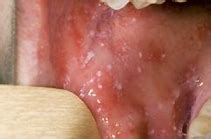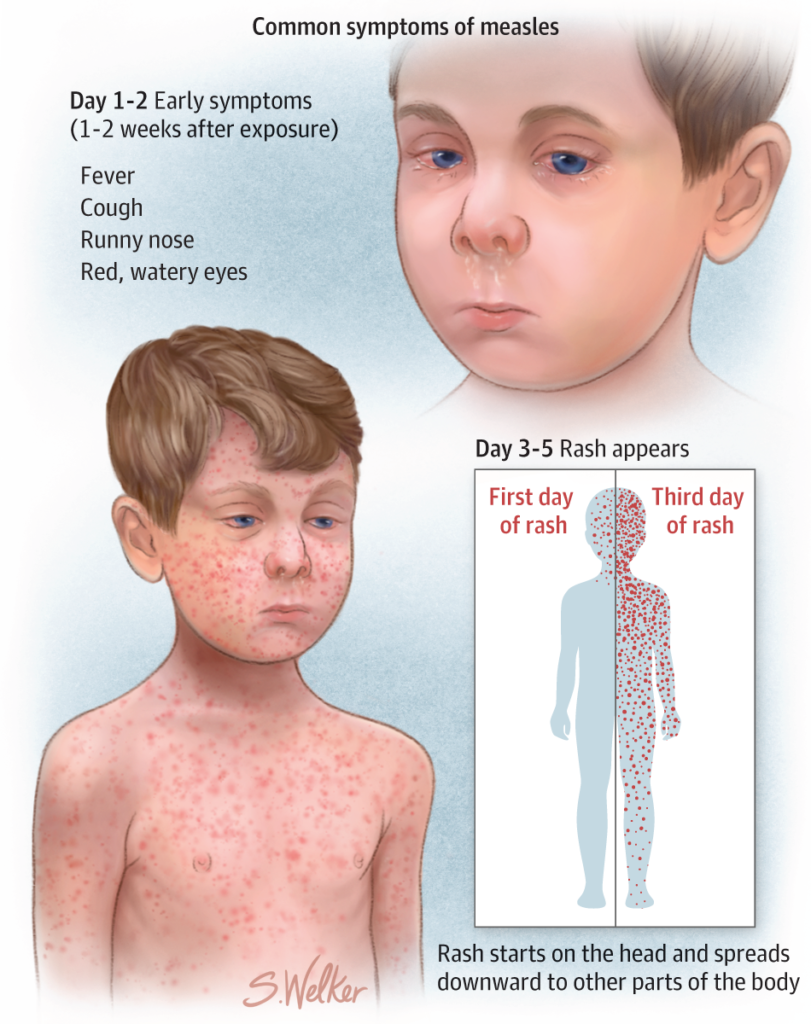Measles is an infectious disease, that lately has been experiencing a resurgence. When concerns about the carrier ingredients within vaccines developed, people stopped vaccinating their children. Some of these ingredients can be harmful and in rare cases fatal. Measles can also be fatal. Although the fatalities are usually due to measles complications, not due to the infection itself. So, the debate goes on. Vaccinate or don’t vaccinate, that is the question? I will share my thoughts below.
March 27, 2019, Branswell wrote,
“New York County on Tuesday took the extraordinary step of announcing it would ban children who have not been vaccinated against the disease from enclosed public places as part of a 30-day state of emergency.”
What is Measles?
Measles is an acute contagious disease that is caused by a morbillivirus. It’s also known as rubeola. This virus produces symptoms include fever, dry cough, runny nose, sore throat, and conjunctivitis. Also, tiny white spots with bluish-white centers on the inner lining of the cheek. These mucosal spots are Koplik Spots. Patients also develop a red spotty skin rash. The rash starts on the face and then the trunk, arms, and legs. The viral disease is highly contagious and the symptoms show up about 10-14 days after infection. It is transmitted by airborne droplets from the coughs and sneezes of infected people.

Deaths Attributed
According to Iannelli, MD, from 2000 to 2018 there were 2,671 cases with 11 deaths attributed to measles. But many say that these deaths are caused by measles-related complications. Not by the disease itself. With proper treatment of the symptoms, measles is rarely if ever fatal. So, even though this disease is rarely fatal. The deaths from measles complications have plummeted since the vaccine was introduced in 1963. Prior to the vaccine, there were between 300-500 measles-related deaths per year in the United States. Over the past 10 years, the average is slightly less than one measles-related death per year. This may in part be attributed to better medical care and medical advancements. But the evidence is pretty clear. Vaccinations save lives, especially in the very young demographic of our population.
Reasons for the Resurgence of Measles Over the Past Several Years
According to the CDC, during 1989-1991, a major resurgence of measles occurred in the United States. More than 55,000 cases and greater than 120 measles deaths have been reported. The resurgence comes from an increased proportion of cases among unvaccinated preschool-aged children. Particularly those residing in urban areas. Since then, requirements to have vaccinations prior to attending public schools have been enacted. This has decreased the cases of measles and the death toll attributed to measles. But recently, there has been a new resurgence of measles. This new resurgence started in 2014 with 667 cases reported and while this resurgence has died down in the US. There have been quite a few new cases, many of which are directly related to people refusing to vaccinate their children or due to unvaccinated immigrants.
Safety of the Measles Vaccines
According to the National Vaccine Information Center, the Centers for Disease Control report minor side effects from the MMR-V and MMR vaccines. These complications include low-grade fever, injection site redness or rash, pain at the injection site, and facial swelling. They also have reported moderate side effects including a complete body rash, temporary low platelet count, temporary stiffness and pain the joints, and seizures. The MMR-V has a higher risk of seizures than separate shots of MMR and varicella vaccines. MMR-V as the first dose of the series increases the risk of seizures. Rare serious side effects of both MMR-V and MMR include brain damage, coma, chronic seizure disorder, lowered level of consciousness, loss of hearing, and death.
Vaccine Deaths and Injuries
From the initial start of Measles vaccination in 1963 until November 30, 2018, there have been more than 93,179 reports of measles vaccine reactions, hospitalizations, injuries and deaths following measles vaccinations. To including 459 related deaths, 6,936 hospitalizations, and 1,748 related disabilities. The vaccine was approved in 1963 and only about 400 people have died from measles since then. Again, prior to the vaccine, there were 300-500 deaths per year. The vaccines are clearly not safe for everyone but are safe for most people. So, what should we do? Vaccinate or not vaccinate?

Conclusion
It is unsure whether modern medical science and our ability to treat symptoms have decreased the deaths from measles. Or, if the decreased death toll is due to the vaccination. I think the answer is unknowable. The question is, do you vaccinate your child knowing that the vaccine is safe for most people. Or, choose to not vaccinate, because you feel the vaccine is not safe enough. So, it is obviously a personal choice. Modern medicine could be all that’s necessary to decrease deaths. Especially in medically advanced societies like the United States. The vaccine may also only be necessary for developing countries. In other words, countries with poor medical capabilities.
Again, it will have to be a personal choice for each parent. You must keep in mind the overall health of your child and also your own reaction to shots. If you react poorly to vaccines, your biological child probably will too.
References
- Branswell, H. (2019, March 27). Citing measles emergency, this county just banned unvaccinated children from public places.
- NVIC. (2019). Can measles vaccine cause injury and death – National Vaccine Information Center.
- Rojas, N. (2019, January 28). Measles Outbreak 2019: What are the symptoms, how does the highly contagious virus spread?
- VAXOPEDIA. (2019, February 10). When Was the Last Measles Death in the United States?


